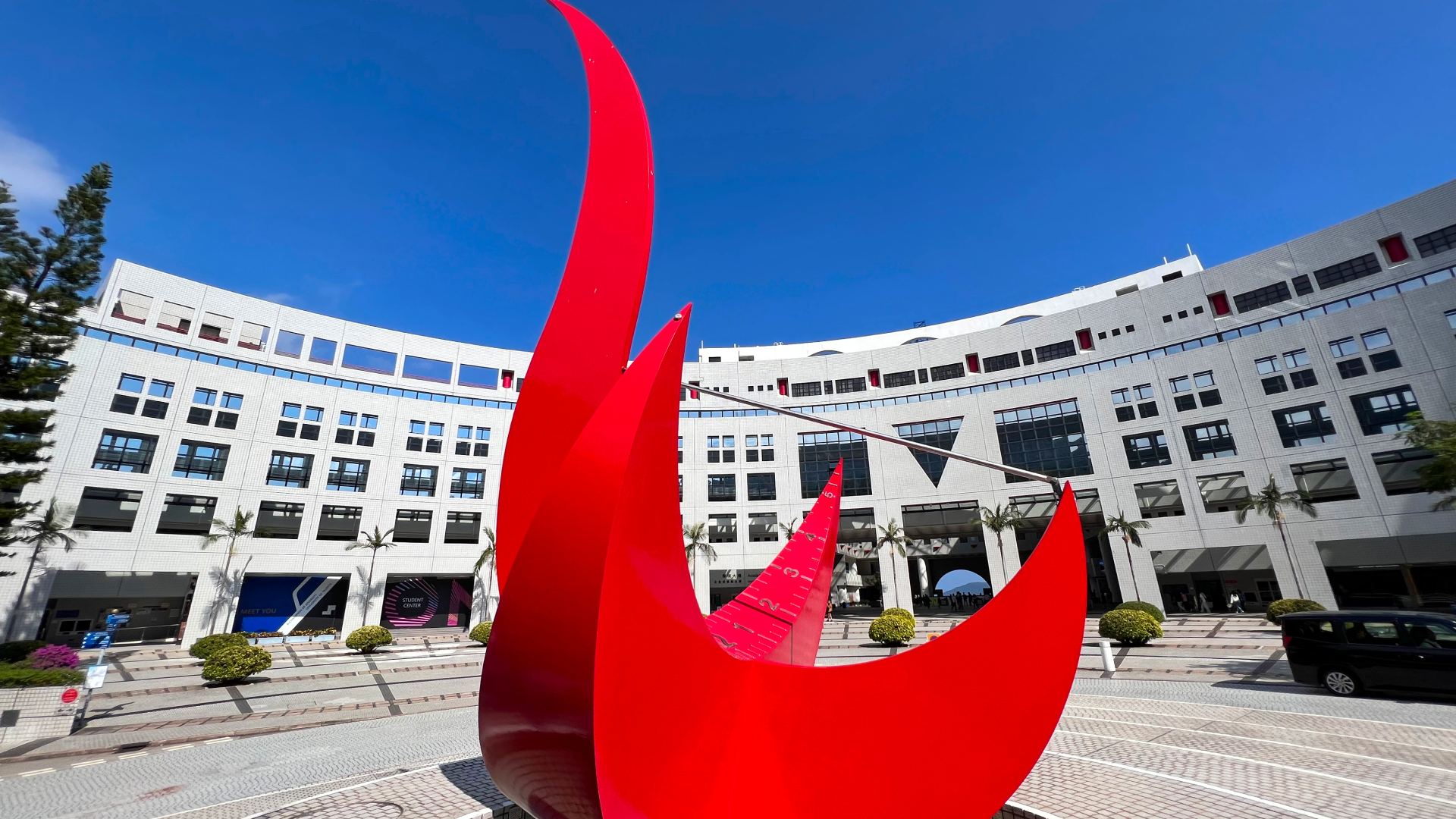News & Stories
2018
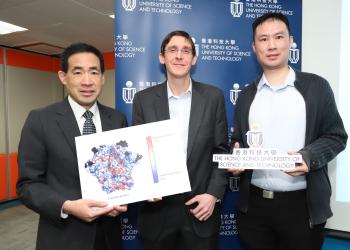
News
HKUST Researchers Discover Fitness Landscape of HIV Envelope Protein That May Help Vaccine Development
An international multi-disciplinary research team led by scientists at the Hong Kong University of Science and Technology (HKUST) has discovered for the first time a computational framework that could map out the fitness landscape of a crucial protein in the human immunodeficiency virus (HIV), potentially paving the way for rational design of a vaccine that may force the deadly virus to mutate into forms that lead to its demise.
Despite significant advances in medicine, an effective vaccine for HIV is still not available, although recent hope has emerged through the discovery of antibodies capable of neutralizing diverse HIV. The virus, however, can still evade known broadly neutralizing antibody responses via mutational pathways, which makes it all the more difficult to design an effective solution.
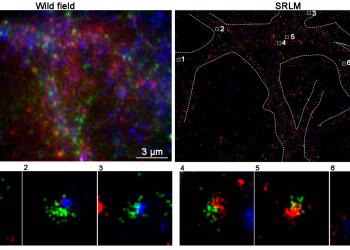
News
HKUST Scientists Reveal How Human Brains Keep Balance
An interdisciplinary team of scientists from The Hong Kong University of Science and Technology (HKUST) has discovered the mechanism of how human brains turn on and off neuronal activities, providing an important foundation to understand a wide range of neurologic conditions such as epilepsy, Parkinson's disease and ataxia-telangiectasia diseases.
“As with all things in life, healthy brain function depends on a balance of neuronal activities. We think of our brains as active - moving a leg and saying a word are all "active" events, but it is just as important that our brains be able to stop these actions,” said Cheng Aifang, a postgraduate student from the Division of Life Science who made the discovery under the guidance of the division’s head and Chair Professor Karl Herrup. “Yet it was not clear how our brains actually perform this go/stop function until now.”
2017
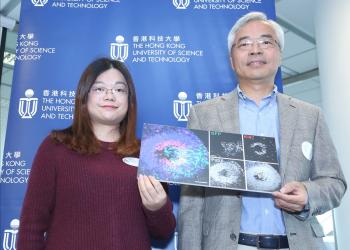
News
Awards-winning HKUST Neuroscientist Discovers Mechanism of Schizophrenia
A research team led by awards-winning neuroscientist and structural biologist Prof Zhang Mingjie of the Hong Kong University of Science and Technology (HKUST) has recently reached a breakthrough unveiling the fundamental mechanism that causes schizophrenia and other serious psychiatric conditions. Such discovery may potentially lead to the development of new treatments and drugs for the mental disorders. At present, there are about 40,000 diagnosed schizophrenic patients in Hong Kong [1].
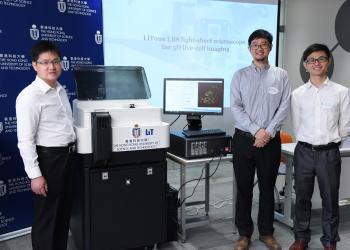
News
HKUST Discovers New Technology to Capture Live Cell Images Opening New Possibilities to the Study of Cell Biology
Researchers at The Hong Kong University of Science and Technology (HKUST) have developed a new generation of microscope, which not only could capture 3D live cell videos, but the resulted images are also of much higher quality, greatly enhancing the accuracy and the scope of research on cell biology.
While an existing confocal microscope can also capture 3D bio-images, the laser light hitting on the sample is typically one million times that of summer sunlight, such intense light exposure inevitably disrupts cell activities and eventually kills the cell, posing limits to the study of cell biology.
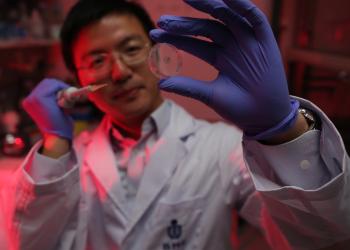
News
HKUST Develops New Stimuli Responsive Smart Hydrogels That Open Doors for Future Material Biology and Biomedical Applications
A research team led by Prof SUN Fei, Assistant Professor of Chemical & Biological Engineering at The Hong Kong University of Science and Technology (HKUST), has created a new protein-based stimuli-responsive smart hydrogel that could open doors for future material biology and biomedical applications.
Hydrogels, also known as soft matter in the medical world, are leading materials for biomedical applications such as drug delivery and stem cell therapy. But traditional hydrogels, used in products such as facial masks and contact lenses, are made up of either synthetic polymers or biological extracts such as animal collagen, are likely to cause allergies. They cannot fully mimic the complex biological environment needed for cell growth and development.
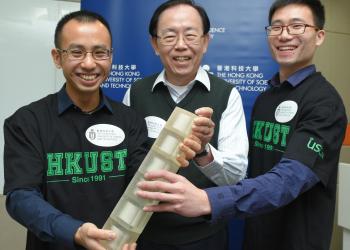
News
HKUST Researchers Create Solid Metamaterials with Fluid-like Property that Can Be Used for Wave Filtering and May Help Protect Buildings from Earthquakes
The Hong Kong University of Science and Technology (HKUST) researchers have successfully created solid composite materials with the unique wave property of fluid, a property of which forbids the transmission of transverse waves. The transverse waves can lead to destructive horizontal shaking during earthquake. Such composite, also called “metamaterials”, can be used for wave filtering and vibration control, and may eventually provide an alternative earthquake proofing solution as well as improve the efficiency of medical ultrasound transducers.
2016

News
HKUST Committed to Nurturing Young Research Talents Three Undergraduates Publish Paper in Nature Communications
The Hong Kong University of Science and Technology (HKUST) is dedicated to nurturing students’ passion and interests in research. Three undergraduate students have recently discovered a method that could make production of entangled photon pairs (biphotons) – an essential element for quantum communication and quantum network – much easier and cheaper, taking popularization of such next-generation communication a step closer to reality.
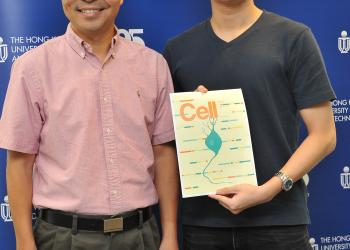
News
HKUST Researchers Find Possible Mechanisms of Human Brain Disorders That May Shed Light on New Treatments
A research team led by Prof Mingjie Zhang, Kerry Holdings Professor of Science of the Division of Life Science at The Hong Kong University of Science and Technology (HKUST), has achieved a breakthrough that provides mechanistic insights into the causes that lead to various neuropsychiatric disorders such as autism, intellectual disorders (ID) and schizophrenia. With their discoveries, new treatments for these disorders may be developed in near future.
All neurons in our brain are wired via a micron-sized connection unit called synapse, and each synapse contains a layer of densely-packed, protein-rich compartment called postsynaptic density (PSD), which is responsible for brain signal processing and transmission. While the existence of PSDs has been known to scientists for 60 years, how PSDs form and change in response to brain activities are poorly understood.

